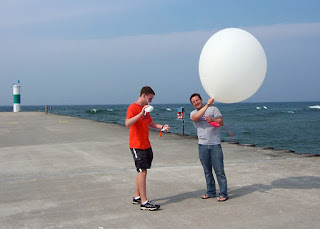University of Illinois atmospheric scientist David Kristovich tested a mobile sounding system that might help predict the fate of storms that move across Lake Michigan. This system measures temperature, humidity, and atmospheric pressure.
“The Great Lakes make it difficult to predict summer weather. One problem weather forecasters face is determining what will happen when massive storms reach one side of the lake. It is hard to figure out if those storms will make it across to the other side and cause severe weather,” Kristovich said. “We don’t have a lot of information. On the lake, we don’t have people taking observations all over the place like we do on land.”
The device they used is called a rawinsonde, which is attached to a weather balloon with a parachute. Because the system is connected to a balloon, researchers were also able to record the wind direction and speed.
Kristovich said having a test run for the device was critical for ironing out issues for future projects.
This study is one of many funded as development of “seed” grants for researchers, either to begin start-up studies that may grow into larger work, or to complete ongoing projects. This project and others are highlighted in our latest issue of our newsletter, The Helm.


